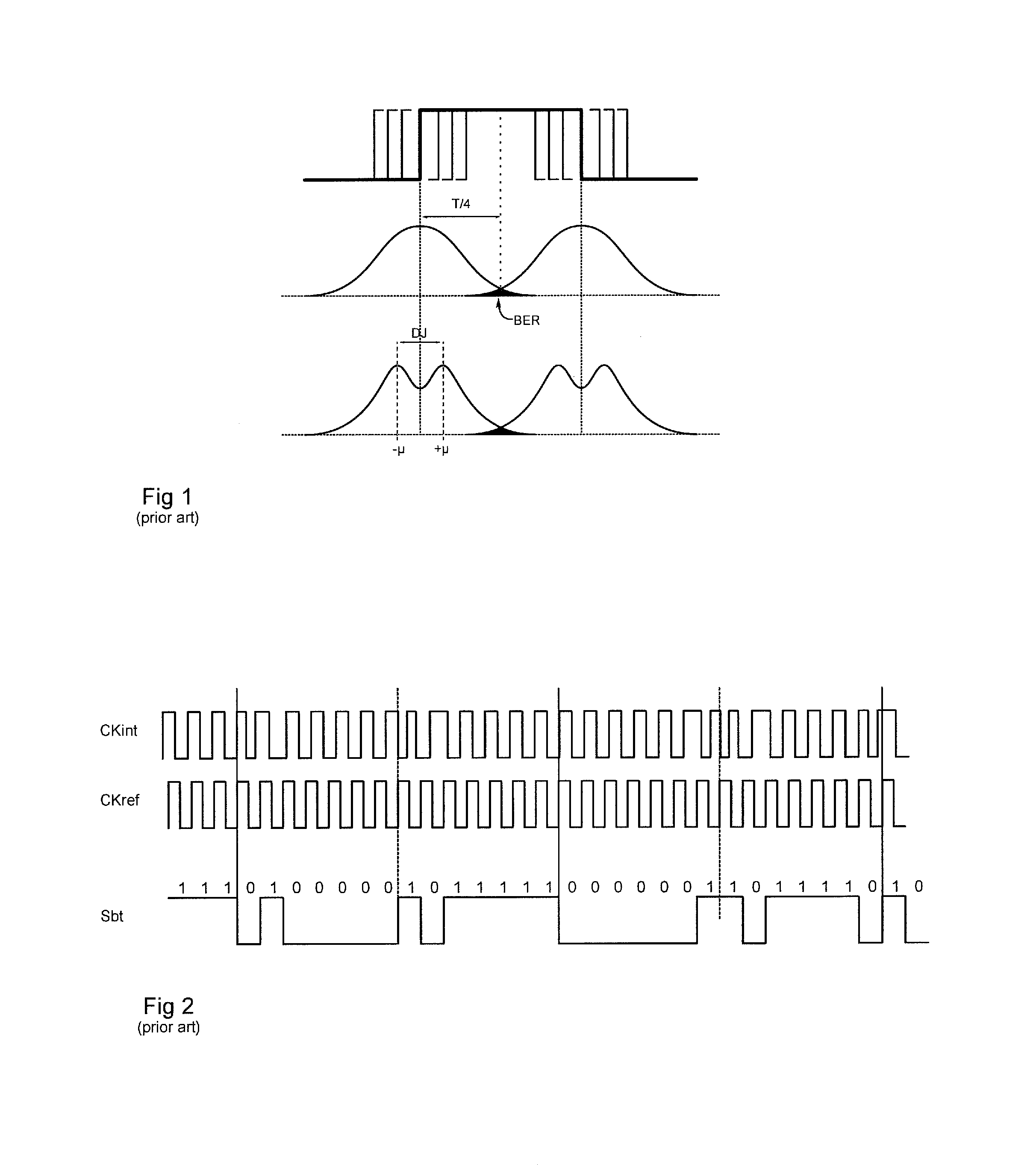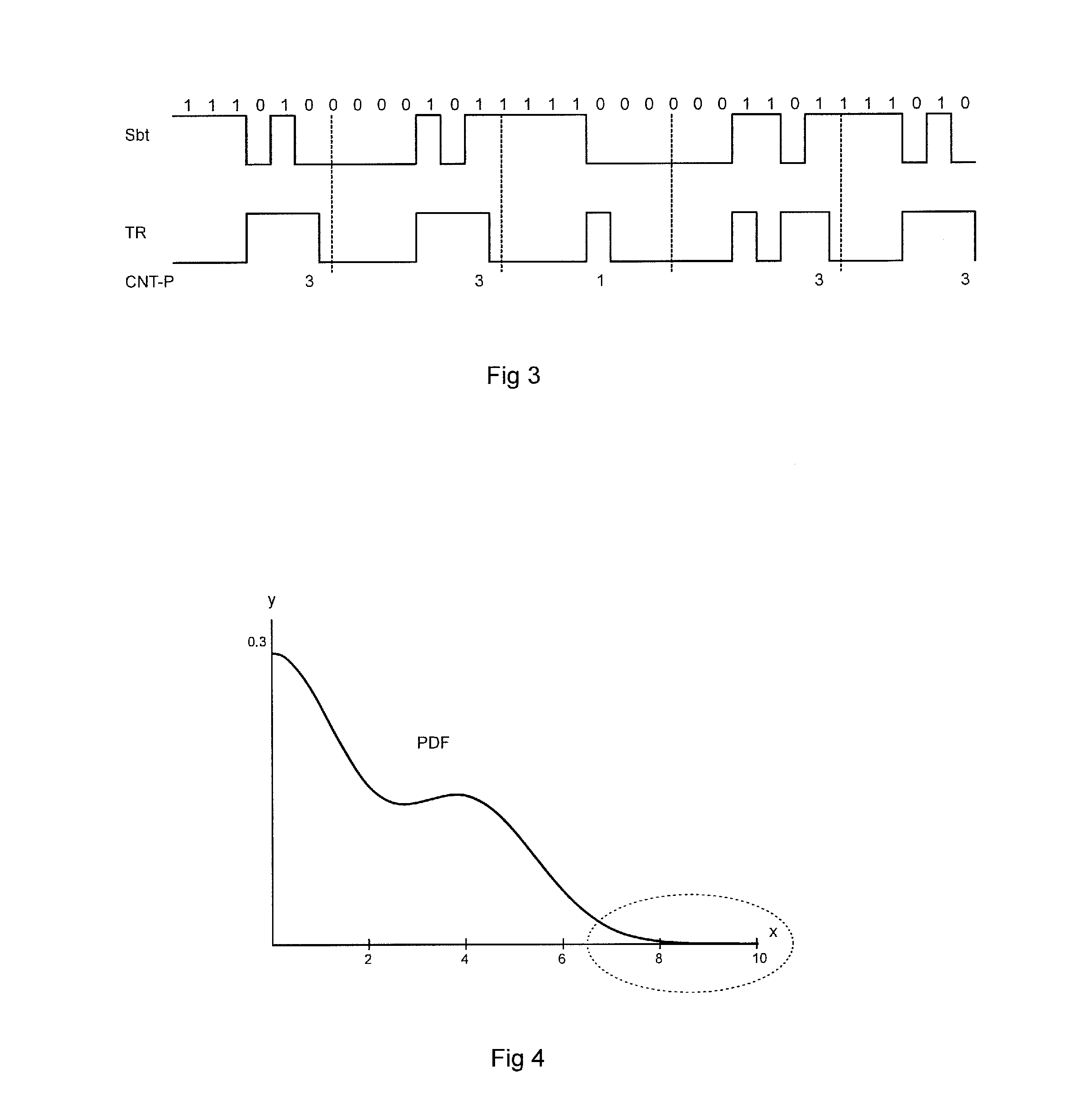Characterization of the jitter of a clock signal
a clock signal and jitter technology, applied in the field of clock signal jitter analysis, can solve the problems of sampling errors, bit error rate ber, sampling errors,
- Summary
- Abstract
- Description
- Claims
- Application Information
AI Technical Summary
Benefits of technology
Problems solved by technology
Method used
Image
Examples
Embodiment Construction
[0024]FIG. 3 shows a beat signal Sbt, complying with FIG. 2, obtained after sampling the observed clock signal CKint by the reference clock signal CKref. As in the above-mentioned '055 patent, the pattern occurrences in signal Sbt are counted. In FIG. 3, the occurrences of the patterns 01 and 10 are counted, which in fact show the transitions of signal Sbt. Each pattern occurrence is indicated by a state 1 of a signal TR. The number of cycles (of clock CKref) during which signal TR is at 1 is counted in a counter CNT-P.
[0025]Instead of indefinitely incrementing counter CNT-P over the test interval, as disclosed in the above-mentioned '055 patent, the counter is periodically reset, preferably between two theoretical edges of beat signal Sbt, at times indicated by vertical dotted lines. Thus, counter CNT-P indicates the number of pattern occurrences for each theoretical edge of signal Sbt. FIG. 3 indicates the counts corresponding to the example shown.
[0026]These counts happen to be c...
PUM
 Login to View More
Login to View More Abstract
Description
Claims
Application Information
 Login to View More
Login to View More - R&D
- Intellectual Property
- Life Sciences
- Materials
- Tech Scout
- Unparalleled Data Quality
- Higher Quality Content
- 60% Fewer Hallucinations
Browse by: Latest US Patents, China's latest patents, Technical Efficacy Thesaurus, Application Domain, Technology Topic, Popular Technical Reports.
© 2025 PatSnap. All rights reserved.Legal|Privacy policy|Modern Slavery Act Transparency Statement|Sitemap|About US| Contact US: help@patsnap.com



